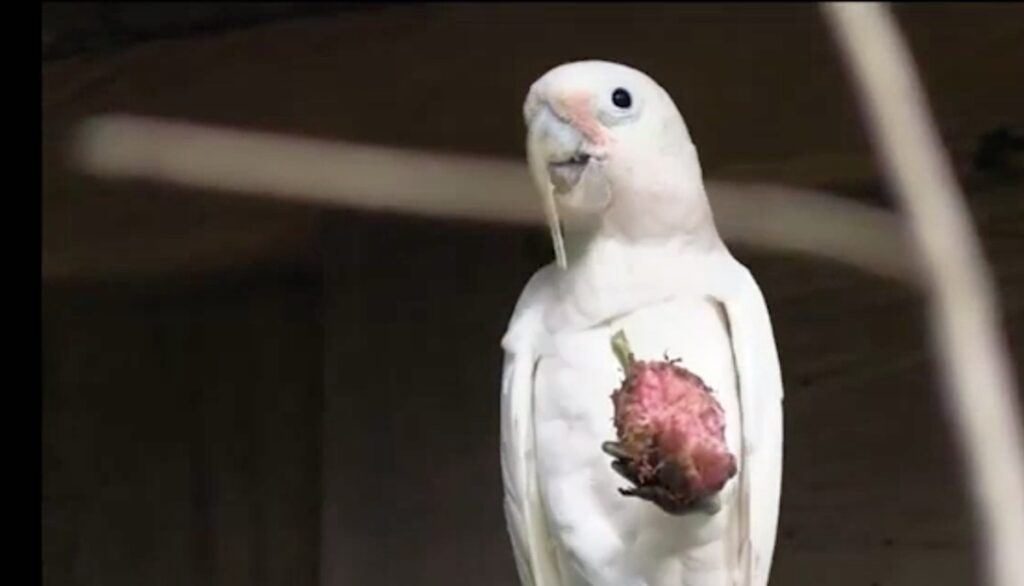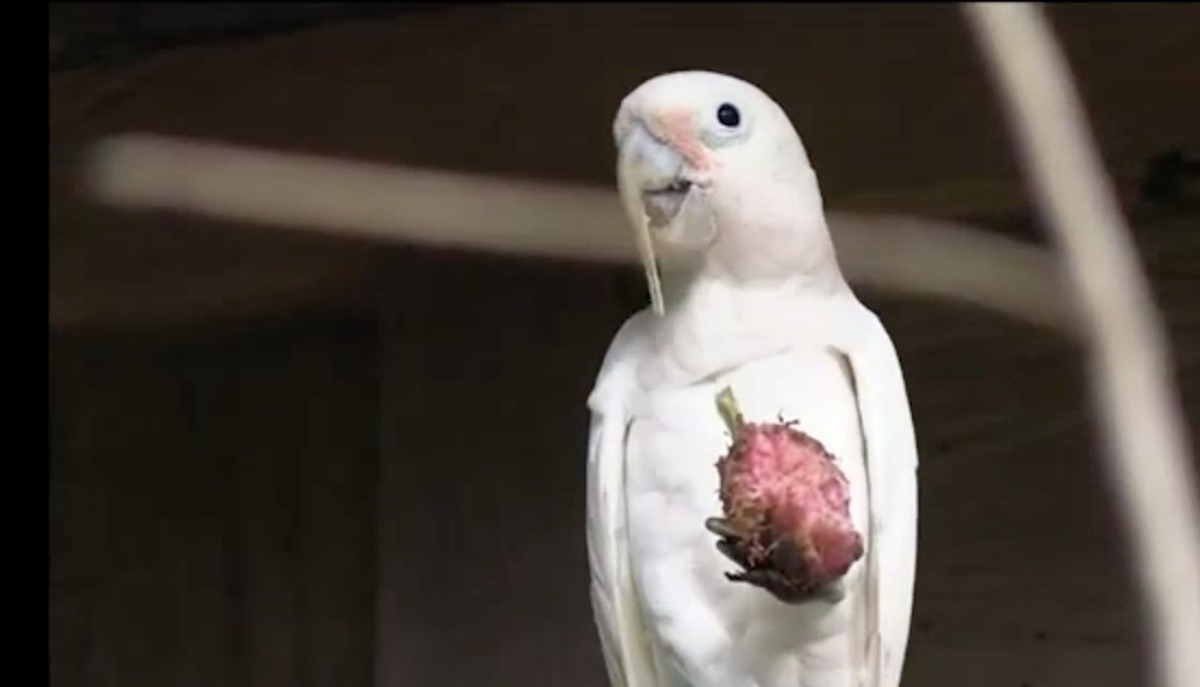Truly astonishing behavior has just been recorded in a pair of wild Goffin’s Cockatoos, who like expert bandits, manufactured an entire three-piece set of tools to burgle their way into the pit of a mango.
Caught wild and held for a short time in a research aviary in Indonesia, it is the kind of behavior that typifies the most advanced tool users in the animal kingdom, and solidifies the Goffin’s Cockatoo as one of the avian group’s major bird-brainiacs.
Perhaps the most delightful part of this discovery was that it happened serendipitously, while Mark O’Hara and Berenika Mioduszewska were studying a new group of wild birds in their research aviary on the island of Tanimbar.
“I’d just turned away, and when I looked back, one of the birds was making and using tools,” O’Hara, of the Messerli Research Institute in Vienna Austria, tells Science. “I couldn’t believe my eyes!”
Before the capture of the canny cockatoos, O’Hara and Mioduszewska had spent an eye-watering 900 hours watching them feed high in the canopy without ever once witnessing tool use.
A few other bird species, like the New Caledonian Crow and Hyacinth Macaw, have been documented making stick tools, and even hook tools.
Goffin’s Cockatoos are well-documented as intuitive social learners that can solve a variety of problems and puzzles. The Messerli Institute has, in fact, shown how one individual was able to teach his mates how to craft and use tools. That, however, was just one tool, for one purpose.
This new observation is the first time any bird species has been seen creating and using a set of tools in a specific order
RELATED: Research Shows Why Crows Are So Intelligent and Even Self-Aware—Just Like Us
The bird-brained bandit
While researching the cockatoos, the team would regularly provide them with food they found about the island, including the wawai, or sea mango, which is poisonous to humans but nutritious for birds. At the center of the mango a hard pit protects a large, nutritious seed.
For awhile it seemed there was nothing special about the bunch of birds they captured, but two individuals, upon getting their talons onto the pits, began to craft not one, not two, but a set of three different tools to work their way into the fruit pit.
“Repeated provisions of the fruit allowed us to analyze the behavior in detail, and to collect and trace some of the manufactured tools,” explains O’Hara in a video abstract. “Using a structure-from-motion technique we could create 3D models and gather detailed measurements such as size and volume…[of the tools used]. Based on the physical properties, the function analysis classified three types of tools; we discovered that each tool type seemed to serve a different purpose.”
LOOK: Man is Stunned After He Sets Up Camera Inside Bird Box and Attracts 41 Million Fans Worldwide
With a thicker section of branch, they would use their beak to push and pry open one end of the pit, while with a second, medium-fine implement, they punctured the membrane surrounding the seed. Lastly, they would make a scoop-like tool which when maneuvered with their mouth, allowed them to extract the seed material.

This making of tool sets has been seen in humans, chimpanzees, and capuchin monkeys; full stop. Chimps use between two and five tools for termite and beehive raids.
Tool use has been proposed in the parrot lineage as having a strong captivity bias, so whether the behavior was tied to their stay in the aviary or whether they use tools in the wild is something O’Hara and Mioduszewska discuss in their research paper in Cell.
“If they had a genetic predisposition to use tools, all the birds would do it,” O’Hara tells Science. “Since only a few make these, it’s more likely they invented them independently,” which would be even more likely as the two individuals displayed immediate and exceptional proficiency.
RELATED: ‘Like a Beautifully-tuned Instrument’: 2000 Microphones Unlock the Mystery of Why Hummingbirds Hum
They believe that it is not species-wide but acquired by individuals through opportunistic innovations, or by watching and learning from others. A number of intriguing details emerge in the Discussion section, such as that tools tended to be crafted to specifications before use, rather than through a trial-and-error process.
Another detail is that around the island they had found fruit underneath wawai trees that appeared to had been foraged on with tools. One actually contained a wooden fragment inserted into the fissure of the pit, which provided enough years go by, could be the first-ever instance of “avian-archaeology.”
O’Hara and Mioduszewska’s paper is filled with videos that are stunning to watch, and can be accessed here for free.
FLY This to Your Bird-Loving Flock on Social Media…




















